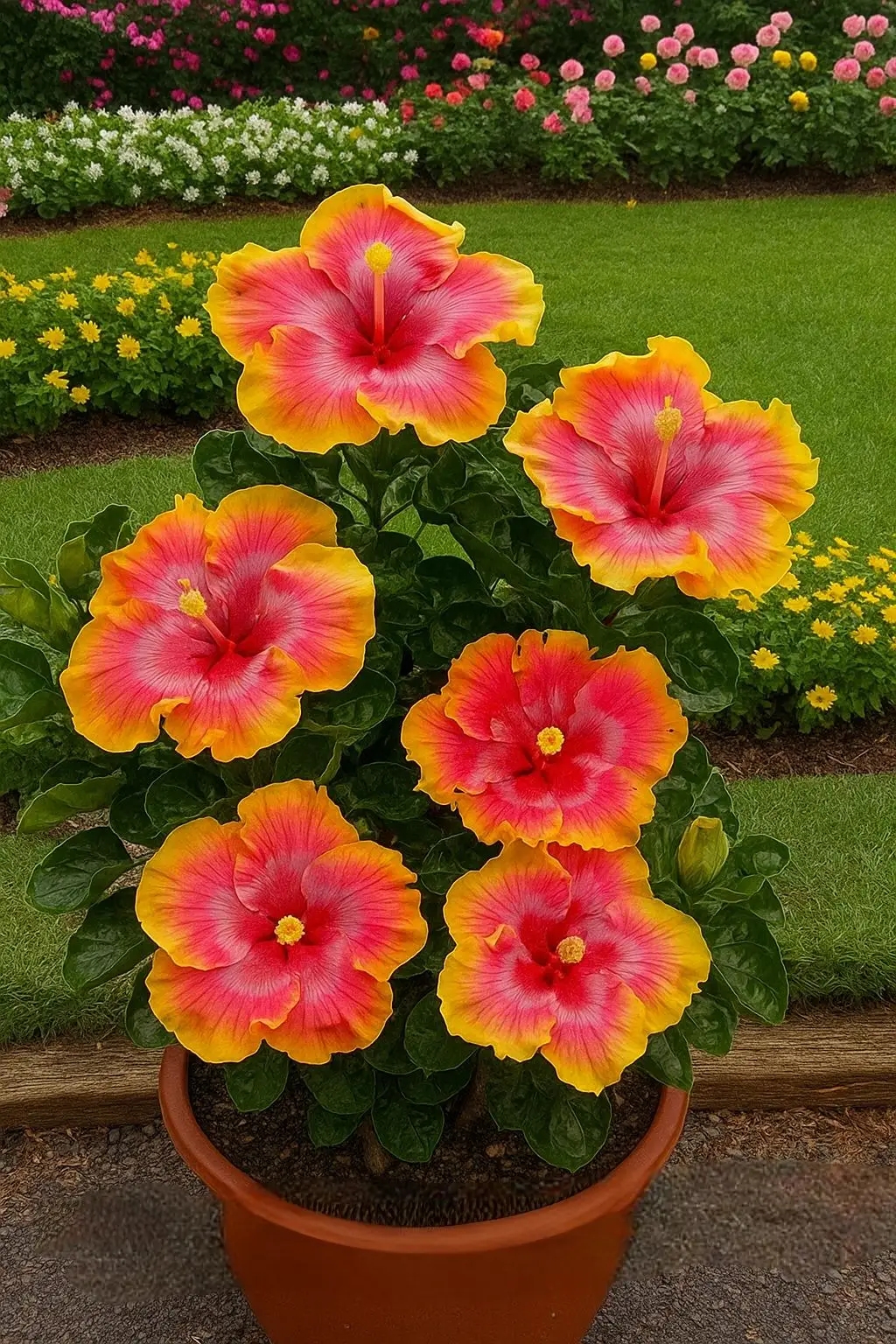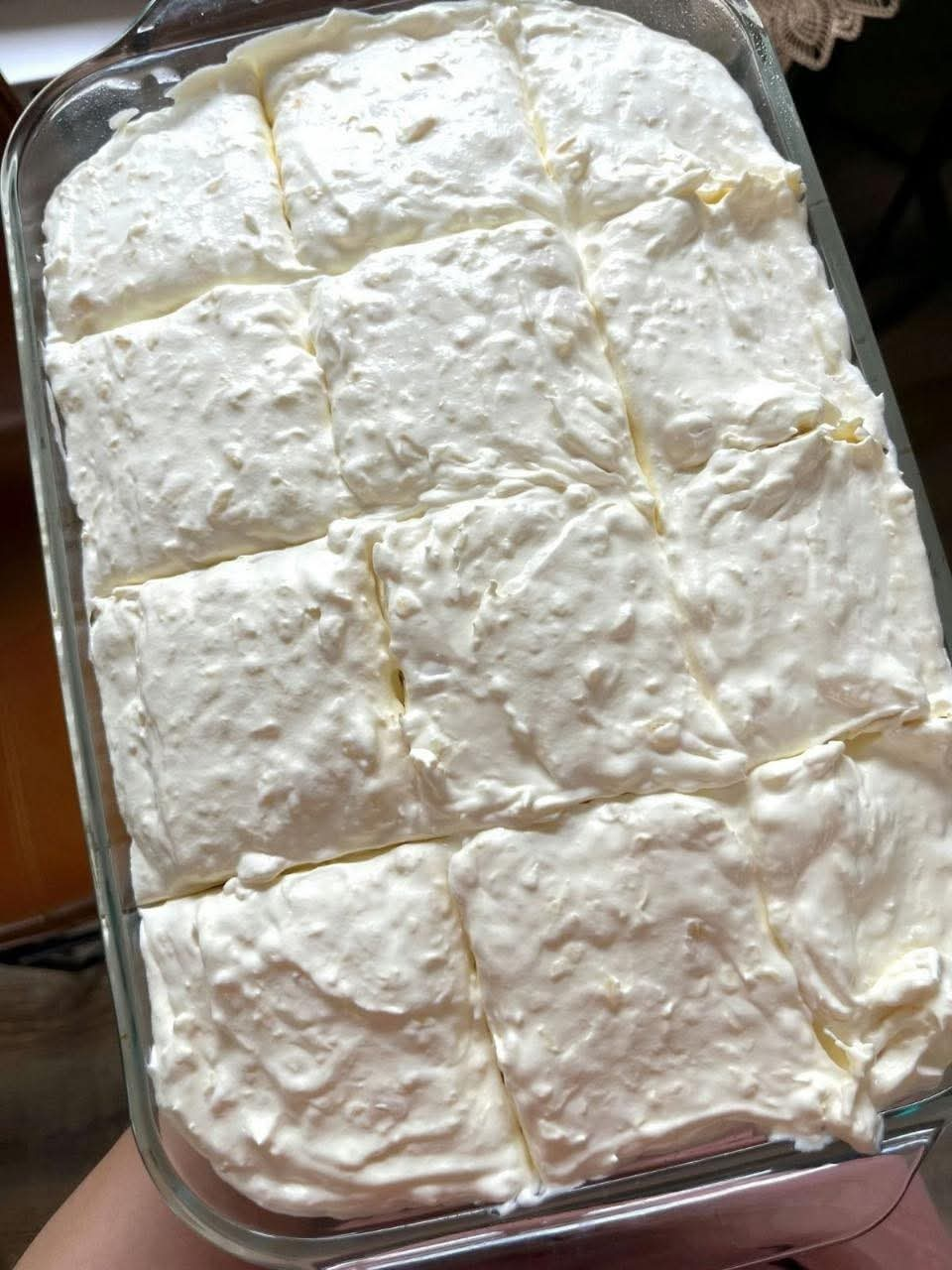Few plants bring as much tropical flair to a garden or patio as the tropical hibiscus. With enormous, vividly colored flowers that look almost painted, hibiscus plants are the stars of warm-weather gardens and a favorite choice for container planting.
This guide will walk you through everything you need to know — from planting to year-round care — so your hibiscus produces show-stopping blooms season after season.
1. Meet the Tropical Hibiscus
The tropical hibiscus (Hibiscus rosa-sinensis) is native to East Asia but has been cultivated in tropical and subtropical regions worldwide. Unlike its cold-hardy relatives, tropical hibiscus thrives in warm, frost-free climates.
Key Features:
Flowers: Typically 4–8 inches across, with single or double petals in brilliant colors — red, pink, yellow, orange, and multicolored blends.
Blooming period: Late spring through fall (year-round in tropical climates).
Growth habit: Evergreen shrub, can reach 4–10 feet tall in the ground or remain compact in pots.
Lifespan: Can live for decades with proper care.
2. Choosing Your Hibiscus Variety
There are hundreds of cultivars, each with unique color patterns, petal shapes, and sizes.
Popular Types:
Single bloom varieties — classic hibiscus look, often with bold color contrasts.
Double bloom varieties — fuller, rose-like flowers for extra drama.
Bi-color varieties — like the one in your photo, with fiery yellow edges fading into rich red centers.
When buying, look for plants with healthy green foliage, no yellowing leaves, and plenty of buds.
3. Best Growing Conditions
Sunlight
Tropical hibiscus loves the sun — 6–8 hours of direct sunlight daily is ideal. In very hot climates, afternoon shade can prevent leaf scorch.
Temperature
Optimal range: 60–85°F (15–29°C)
Below 50°F (10°C): Growth slows, leaves may drop.
Frost will kill the plant — bring containers indoors in cold weather.
Soil
Well-draining soil is crucial. In containers, use a high-quality potting mix with perlite or sand for drainage. In the ground, amend clay soils with compost and coarse sand.
4. Planting Your Hibiscus
In Containers
Choose a pot 2 inches wider than the root ball, with good drainage holes.
Fill with a light, airy potting mix.
Place the hibiscus at the same depth it was growing in its nursery pot.
Water thoroughly after planting.
In the Ground
Dig a hole twice as wide as the root ball.
Amend soil with compost for nutrients and drainage.
Backfill and gently firm the soil.
Water deeply.
Tip: In cooler climates, container planting allows you to move the plant indoors for winter.
5. Watering Needs
Hibiscus is a thirsty plant, but overwatering leads to root rot.
Watering Tips:
Keep soil consistently moist but never soggy.
In summer heat, daily watering may be needed.
In winter, reduce watering as growth slows.
Always water at the base — avoid soaking leaves to prevent fungal issues.
6. Feeding for Maximum Blooms
Hibiscus are heavy feeders, especially during bloom season.
Fertilizer Guidelines:
Use a balanced, water-soluble fertilizer (e.g., 10-10-10) or one slightly higher in potassium (K) to encourage flowers.
Feed every 2 weeks during active growth.
In winter, reduce feeding to once a month or stop entirely if plant is dormant.
Avoid fertilizers high in phosphorus — it can harm hibiscus roots.
7. Pruning and Shaping
Pruning encourages bushy growth and more blooms.
When to Prune:
Early spring: Remove dead or weak stems, shape the plant.
Mid-summer: Light trimming to control size.
How to Prune:
Cut just above a leaf node.
Remove any crossing or inward-growing branches.
Pinch back new shoots to encourage branching.
8. Pest and Disease Management
Common pests:
Aphids — cause curling leaves; treat with insecticidal soap.
Whiteflies — tiny white insects; control with neem oil.
Spider mites — cause yellow stippling; wash leaves and use miticide if needed.
Diseases:
- Leaf spot — caused by fungus; remove infected leaves.
- Root rot — prevent by ensuring good drainage.
Regularly inspecting plants helps catch problems early.
9. Overwintering Tropical Hibiscus
If you live where temperatures drop below 50°F (10°C), you’ll need to bring your hibiscus indoors for winter.
Steps:
Inspect for pests before moving inside.
Place in a bright, sunny window or under grow lights.
Water sparingly — about once every 1–2 weeks.
Expect some leaf drop as the plant adjusts.
In spring, gradually reintroduce it to outdoor sun to prevent shock.
10. Encouraging Continuous Blooms
Hibiscus flowers last only 1–2 days, but the plant can produce hundreds of blooms over a season with good care.
Tips for more flowers:
Keep the plant in full sun.
Water and feed regularly.
Deadhead spent blooms daily to direct energy into new buds.
Avoid drastic changes in temperature or moisture.
11. Companion Planting Ideas
Hibiscus pairs beautifully with:
Mandevilla — for climbing tropical blooms.
Plumbago — blue flowers contrast hibiscus reds and yellows.
Coleus — colorful foliage beneath hibiscus shrubs.
Avoid crowding — hibiscus needs good airflow to prevent disease.
12. Fun Facts About Tropical Hibiscus
In Hawaii, hibiscus is the state flower, symbolizing beauty and joy.
In some cultures, it’s brewed into teas (though not all tropical hibiscus varieties are edible like Hibiscus sabdariffa).
They can be trained into small trees, hedges, or kept as compact patio plants.
🌟 Final Thoughts
Growing tropical hibiscus is like bringing a piece of paradise to your home. With its vibrant, oversized blooms and glossy green foliage, it’s the perfect plant for anyone who loves bold garden color.
Give it sunshine, consistent water, regular feeding, and a little pruning — and it will reward you with an endless display of spectacular flowers.
Whether you grow it in a garden bed or a patio pot, your hibiscus will be a conversation starter, a mood lifter, and a daily reminder of the beauty of the tropics.
More Articles You Might Like
-
Texas Toast Sloppy Joes: The Crunchy, Cheesy Upgrade You Didn’t Know You Needed
There’s something timeless about sloppy joes. For generations, this saucy, savory, and slightly sweet ground beef sandwich has been a go-to comfort food in American kitchens. It’s quick, filling, and family-friendly—perfect for busy weeknights. But what if we told you there’s a way to take this classic dish up a notch? Enter the Texas Toast…
-
Classic Pig Pickin’ Cake
When it comes to Southern desserts, few sweets shine as brightly as the Classic Pig Pickin’ Cake. This nostalgic cake, sometimes called a “Mandarin Orange Cake,” has roots deep in Southern tradition. It gets its playful name from its frequent appearance at pig pickin’s—Southern-style barbecue gatherings where communities come together to enjoy slow-cooked pork, sides,…
-
Lemon Garlic Butter Chicken with Creamy Parmesan Pasta
There’s something irresistible about the combination of tender, golden-browned chicken paired with a creamy pasta coated in Parmesan cheese. Add the brightness of lemon, the depth of garlic, and the richness of butter, and you have a recipe that feels indulgent yet approachable enough for a weeknight dinner. Lemon Garlic Butter Chicken with Creamy Parmesan…



